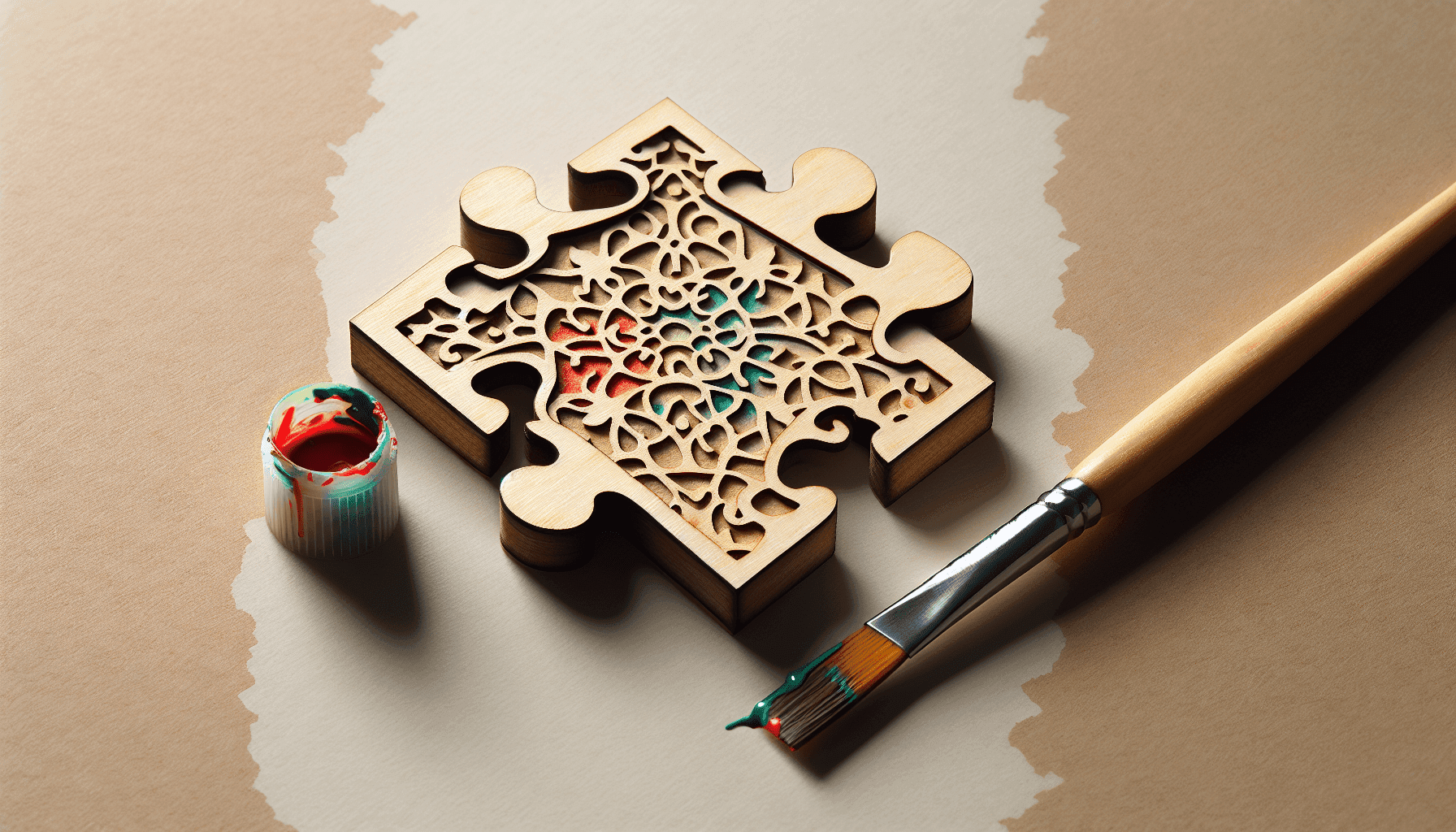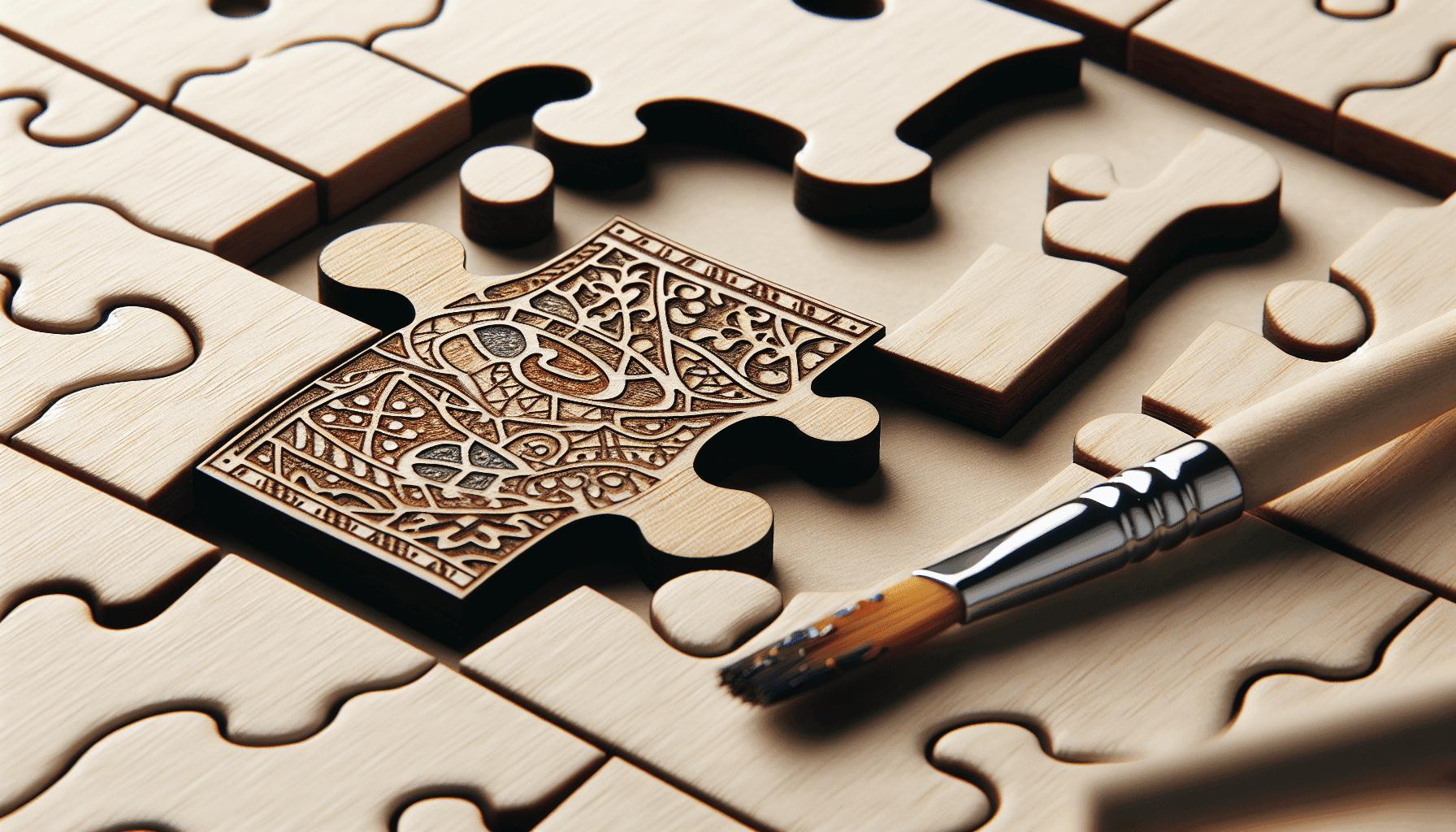Have you ever wondered if your laser-cut wooden puzzles could be more than just beautifully intricate designs and tactile pleasures? Perhaps you’ve thought about painting or customizing them to add a personal touch or to complement your home décor. Laser-cut wooden puzzles, such as those made by renowned brands like Robotime, Rokr, Ugears, and others, are not only delightful to assemble but also serve as decorative pieces or gifts. The question is, can you enhance their aesthetic appeal even further by painting or customizing them?
Understanding Laser-Cut Wooden Puzzles
Laser-cut wooden puzzles are intricate models that often involve considerable craftsmanship and precision. These puzzles are designed and produced using advanced laser technology, ensuring high accuracy and consistent quality. The designs range from simple flat puzzles to complex 3D puzzles like vehicles, buildings, and even mechanical gadgets. Brands like Vitascope, Wood Trick, and Wooden City have honed this technology to create stunning models that captivate enthusiasts worldwide.
The Composition of Laser-Cut Puzzles
These puzzles are usually crafted from plywood, MDF, or basswood. Each type of wood has its unique properties: plywood and MDF are often used for more robust designs, while basswood is lightweight and lends itself well to intricate detailing. Understanding the wood type of your puzzle is crucial when considering modifications like painting, as different woods respond differently to paints and finishes.
Painting Your Wooden Puzzle
Painting your wooden puzzle can be a fantastic way to personalize it. Here’s how you can safely and effectively apply paint while maintaining the structural integrity of your puzzle pieces.
Selecting the Right Paint
Not all paints are equal, especially when it comes to use on wooden surfaces. Acrylic paints are often recommended due to their versatility and rich colors. They adhere well to wood and dry quickly. However, if you’re aiming for a more natural finish, stains or wood dyes can enhance the grain of the wood while adding color.
Acrylic vs. Stain: A Comparison
| Feature | Acrylic Paint | Wood Stain/Dye |
|---|---|---|
| Finish | Opaque, vibrant colors | Translucent, highlights grain |
| Drying Time | Quick | Varies, generally longer |
| Application | Brushes, sponges, spray cans | Brushes, cloth, spray |
| Durability | Good, can chip over time | Excellent, penetrates wood |
| Maintenance | May require varnish for protection | Less maintenance |
Preparation Steps
Before painting, preparation is key. First, ensure each puzzle piece is free of dust and oil; this may involve lightly sanding surfaces to improve paint adhesion. If your puzzle has already been assembled, disassemble it if possible, so you can paint each piece thoroughly.
Best Practices for Painting
- Test First: Always test your chosen paint on a scrap piece of wood or an inconspicuous area to see how it reacts.
- Thin Coats: Apply thin coats of paint, allowing each layer to dry completely to prevent a sticky finish.
- Sealing: Consider using a clear varnish or sealant after painting to protect your work and enhance the paint’s longevity.

Customizing Your Wooden Puzzle
Aside from painting, several other customization methods can help make your puzzle truly unique.
Adding Decorative Elements
Consider incorporating decorative elements such as decals, stickers, or small embellishments into your design. This can introduce textures and patterns that paint alone cannot achieve.
Engraving Techniques
If you have access to a laser engraver, adding intricate details or personal messages is an appealing way to customize wood without altering its dimensions significantly.
Combining Techniques
Sometimes the best results come from combining multiple techniques. For example, a mix of paint and stain can create depth and dimension, while the addition of engraved elements adds a personal touch.
Benefits of Customizing Your Puzzles
Customizing your laser-cut wooden puzzles is more than just a creative exercise. Let’s look at some of the broader benefits.
Enhancing Aesthetics
Personalized puzzles can enhance room décor and create focal points. A well-chosen color scheme can complement existing décor, making puzzles more than just items of curiosity.
Personal Engagement
Customizing puzzles adds a layer of engagement. It’s not just about assembling a kit, but shaping it into something uniquely yours. This can make the process more satisfying and memorable.
Unique Gifts
A custom puzzle makes an exceptional gift, offering a personal touch that off-the-shelf models cannot. You can tailor colors and designs according to the recipient’s tastes or commemorate special occasions.
Educational Value
Involving children in the customization process can offer educational benefits. It encourages creativity, improves motor skills, and can even spark an interest in arts and crafts.

Tips for Beginners
If you’re new to painting or customizing puzzles, start small. Here are some tips that can aid you on your creative journey:
- Research: Look up techniques and inspirations online. There are endless tutorials and communities ready to share their knowledge.
- Quality Materials: Invest in quality paints and brushes. Cheap materials can lead to frustration and subpar results.
- Patience: Customizing is a craft that takes time. Rushing the process may lead to mistakes or dissatisfaction.
- Experiment: Don’t hesitate to try new techniques. Sometimes the best outcomes come from unexpected experiments.
Maintaining Customized Puzzles
Once you’ve customized your puzzle, maintaining it properly will ensure it remains in top condition.
Care and Maintenance Tips
- Handling: Handle with clean hands to prevent oils from skin affecting the paint.
- Cleaning: Dust regularly with a soft, dry cloth. Avoid water, which can damage wood.
- Storage: Store your puzzles away from direct sunlight and humidity, which can fade colors and warp wood over time.
Overcoming Challenges
Customizing puzzles isn’t always smooth sailing. Whether it’s handling paint smudges or dealing with tight-fitting pieces, challenges may arise.
Troubleshooting Common Issues
- Paint Smudging: Allow ample drying time and consider using a sealant.
- Tight Joints: Sand down tight areas slightly for smoother assembly after painting.
- Warping: Store pieces flat in a cool, dry environment before assembly to avoid warping from humidity.
Conclusion
Customizing laser-cut wooden puzzles opens up a realm of creativity, allowing these intricate pieces to become even more personal and meaningful. Whether you’re painting bold designs or etching subtle engravings, your personalized puzzle can be a reflection of your style, a testament to your craftsmanship, and a unique conversation starter. So, while the original models are beautiful, the opportunity to create something that’s uniquely yours makes the endeavor worthwhile. With patience, creativity, and a few art supplies, your wooden puzzle adventure can extend far beyond the final piece fitting into place.
Ready to start your 3D wooden puzzle journey? Click on any of the following links for our reviews:
All Categories | Boats | Clocks | Marble Runs | Musical Boxes | Musical Instruments | Puzzle Boxes | Trains | Trams | Trucks